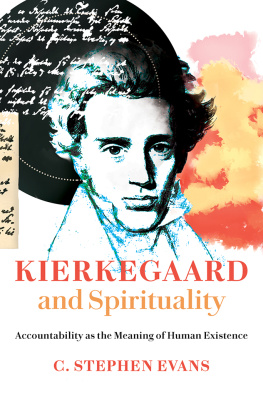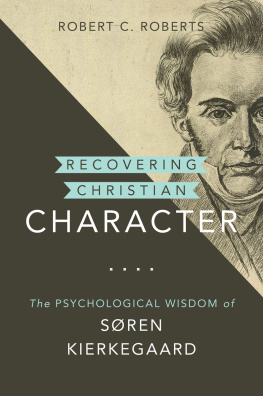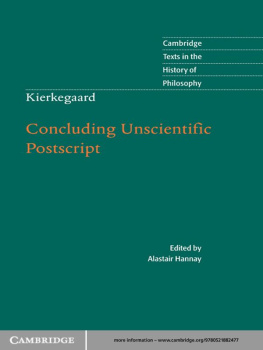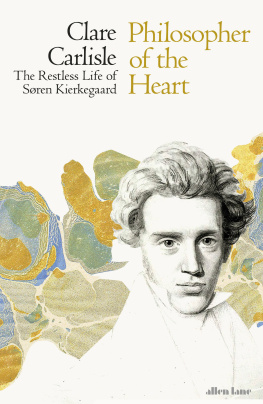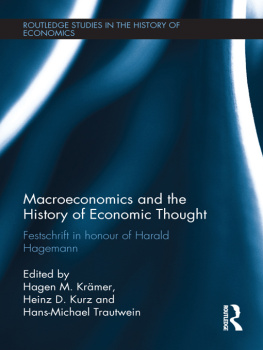Kierkegaard Studies. Monograph Series
Edited by
Heiko Schulz
the Sren Kierkegaard Research Centre
Peter ajda
Jon Stewart
Karl Verstrynge
Volume
ISBN 9783110741995
e-ISBN (PDF) 9783110742480
e-ISBN (EPUB) 9783110742626
Bibliographic information published by the Deutsche Nationalbibliothek
The Deutsche Nationalbibliothek lists this publication in the Deutsche Nationalbibliografie; detailed bibliographic data are available on the Internet at http://dnb.dnb.de.
2022 Walter de Gruyter GmbH, Berlin/Boston
What Does It Mean to Be Human?
Ingolf Dalferth
We live in a time of fundamental changes. Until recently, whoever was born of a woman was considered human, but now we have started to produce embryos that do not belong to our kind. Moreover, artificial general intelligence, digital networking and robotics help us to create environments that are increasingly indistinguishable from us. The rapid evolution of human-looking robots confirms the blurring of the line between man and machine. By making our very selves the subjects of a comprehensive biological design experiment whose parameters we have not really mastered and whose outcome is wholly uncertain, we have embarked on a process that is about to change the definition of what it means to be human. We have lost a clear sense of who and what we are, if we ever had one. But without it we cannot decide what is good for us, as humans, and hence whether the process on which we have embarked really will help people to be better than well, as transhumanists promise. So what does it mean to be human, for us, today?
I
Who and what we are have always been controversial questions. Plato was applauded for his definition of human beings as featherless bipedsbut only until Diogenes the Cynic threw a plucked rooster over the wall of Platos school. People have not only disagreed about the facts of human life (what is true of humans?), but also about the values, goals and ends that humans should actualize in living their lives (how ought we to live as humans?).
Answers to questions about our humanity have been sought along five routes: by contrasting the human with the non-human (other animals), the more than human (the divine), the inhuman (negative human behaviors), the superhuman (what humans will become), or the transhuman (thinking machines). In each case the question at stake and the point of comparison is a different one; and in all these respects the idea of humanity has been defined differently.
But note that it is we who ask these questions and make these comparisons. Our human point of view is inscribed into the very process of comparing ourselves with the non-human, the more than human, the inhuman, the superhuman, the transhuman. We are the point of reference for the contrasts we explore, and in important respects the distinction is not a difference between us and others, but a difference that runs right through ourselves. The difficulty of stating who and what we are is precisely due to the fact that we are so over-determined or multi-coded that we cannot give a simple and clear answer to these questions.
The classical tradition defined the human being as rational animal (animal rationale or animal rationabile). This was understood in two different ways, depending on how one construed the genus (genus proximum) and the specific difference (differentia specifica) in this definition. The Aristotelian tradition took animal to be the genus and rational the specific difference: humans share a nutritive life with plants, and an instinctual life with other animals, but they are distinguished from other animals by their reason, mind or intellect. Philosophers with a more Neoplatonist bent of mind construed it the other way around: by understanding human beings to be mortal rational animals, Porphyry took rationality (rational nature) to be the genus, and animality (mortal bodies) the specific difference. The first view places humans at the top of the animal world because of their intellect or reason, while the second view looks at them as a low or even degenerate kind of rational being because of their materiality and corporeality. Both Jewish and Christian thinkers read this ambivalent philosophical heritage through the lens of their imago Dei (image of God) tradition by comparing humans with the divine. On the one hand they understood that which distinguishes us from other animals (our intellect or reason) to be at the same time that which relates us in an analogical way to the divine. On the other hand they saw the materiality of the body and the sensuality of the animal nature as the reason why humans are excluded from the true intellectual life of reason and rationality.
Modernity inherited both views and both problems. Where it began to understand humanity from an evolutionary perspective, it still looked for biological distinctions that make humans stand out from the animal world. And where it continued the imago Dei tradition, it re-evaluated body, materiality and sensuality positively and conceived the divine differently (not only as spiritual, but in a dipolar way also assomehowmaterial). The first view has been increasingly questioned in recent years: reason, rationality and intellect have been shown in many respects to mark at best a distinction by degree and not an absolute difference between humans and other animals. The second view has created problems because the dipolar account of the divine significantly blurs the distinction between creator and creation that lies at the heart of Jewish, Christian, and Islamic monotheisms.
II
A Kierkegaardian approach avoids these difficulties. It takes seriously that it is we who ask questions about ourselves, about others and about our world. It does not start with the question of what we are (essence), but from the fact that we are (existence), and it cannot do so without taking into account how we are (mode of existence). To be human means to exist in a certain waya way that can be deepened from existing in space and time (sensual Dasein) through living in a moral way (moral Sosein) to living in a way that is true to the nature of our existence (existential Wahrsein). What does this mean?
Kierkegaard had understood Kant: existence is not a predicate of determination. It does not help us to say what something is, but that it isnot somewhere in a fantasy world, but in the actual world in which we live. To define humans as rational beings means to propose a concept of human being from a perspective that reflects the interests of those who define humans in this way. Such definitions may seek to mark our distinction from other beings; to show our openness towards the divine; or to celebrate rationality as the decisive feature of humanity. Concepts of humanity are always controversial and shaped by the interests of those who propose them. Kierkegaard, on the other hand, started not from an attempt to define a concept of what we are, but from the undeniable fact that we are. We couldnt begin to define a concept of what we are if we didnt exist. Therefore, if we want to start from an uncontroversial starting point, we must start from here.
Kant argued that we do not further specify the concept of humans as rational beings if we add and they exist. Rather, we claim that humans thus defined really exist in our actual world. This is Kierkegaards starting-point. He does not start with conceptual possibility, but with


